Graduate Aptitude Test in Engineering 2017
Question Paper Name: Life Sciences 12th Feb 2017
Subject Name: Life Sciences
Duration : 180
Total Marks: 100
Chemistry (XL-P)
1. CO reacts readily with
(A) Fe
(B) Fe2+
(C) Fe4+
(D) Fe3+
Ans: (A)
2. Molecules that are NOT isoelectronic to ![]() ion are
ion are
(A) ![]()
(B) ![]()
(C) ![]()
(D) ![]()
Ans: (D)
3. The extensive quantity among the following is
(A) Pressure
(B) Temperature
(C) Chemical potential
(D) Volume
Ans: (D)
4. The compound that gives characteristic foul smell upon heating with potassium hydroxide and chloroform is
(A) 
(B) 
(C) 
(D) 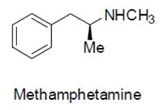
Ans: (B)
5. The correct order of stability in water is
(A) 
(B) 
(C) 
(D) 
Ans: (A)
6. The pair o f molecules having non-linear structures is
(A) ![]()
(B) ![]()
(C) ![]()
(D) ![]()
Ans: (C)
7. The decreasing order of bond lengths for O2, B2, N2 and C2 is
(A) B2 > C2 > N2 > O2
(B) B2 > C2 > O2 > N2
(C) N2 > C2 > O2 > B2
(D) B2 > O2 > N2 > C2
Ans: (B)
8. The octahedral metal oxide with the highest CFSE value is
(A) ZnO
(B) MnO
(C) VO
(D) TiO
Ans: (C)
9. Assuming independent non-interacting electrons, the first ionization energy of Helium atom is
(A) 13.6 eV
(B) 27.2 eV
(C) 54.4 eV
(D) 108.8 eV
Ans: (C)
10. For a reaction A + B → products, the following data was obtained.

A0 and B0 are initial concentrations of A and B, respectively. The overall order of the reaction is
(A) 2
(B) 3
(C) 4
(D) 6
Ans: (B)
11. The EMF for the following cell at 298.15 K is
Ag(s) | Ag+ (aq., 0.01 M)|| Ag+(aq., 1.0 M)|Ag(s)
(Standard reduction potential for Ag+ + e− → Ag is −0.80 V)
(A) 0.12 V
(B) 0.68 V
(C) 0.80 V
(D) 0.92 V
Ans: (A)
12. One gram of a protein is dissolved in one liter of water. The resulting solution exerts an osmotic pressure of 1.4 Torr at 298 K. Assuming that the protein does not ionize in solution, the molecular weight of the protein is ______ g mol−1. (R = 0.082 L atm mol−1 K−1)
Ans: (13260 to 13285)
13. The type of nucelophilic substitution and the possible products for each of the reactions P and Q are

(A) 
(B) 
(C) 
(D) 
Ans: (A)
14. If mono-chlorination occurs at every carbon in the following reaction, the number of isomers (stereo isomers + constitutional isomers) that one can have is

(A) 4
(B) 5
(C) 6
(D) 8
Ans: (C)
15. The major product in the following reaction is

(A) 
(B) 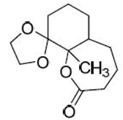
(C) 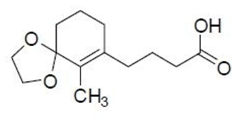
(D) 
Ans: (A)
Biochemistry (XL-Q)
16. The molecular weights of a protein as determined by native PAGE is 400 kDa. This protein when run on a non-reducing SDS-PAGE gave band of 200 kDa and on a reducing SDS-PAGE, gave a band of 100 kDa. The protein is
(A) four subunits of which two sets are linked by two disulfide bridges
(B) four subunits of which are linked by four disulfide bridges
(C) two subunits only and none are linked by disulfide bridges
(D) two subunits which are linked by disulfide bridges
Ans: (A)
17. Which one of the following techniques CANNOT be used to determine the sequence of a novel protein?
(A) Deo novo sequencing by ESI-MS/MS
(B) Edman degradation
(C) Sanger sequencing
(D) Peptide mass fingerprinting
Ans: (D)
18. Which type of polyacrylamide gel can be used for analyzing the four different proteins listed below?
Protein P: 60 kDa, pI 4
Protein Q: 45 kDa, pI 8
Protein R: 60 kDa, pI 6
Protein S: 45 kDa, pI 7.5
(A) 20% gel, pH 4-7
(B) 20% gel, pH 3-10
(C) 12% gel, pH 3-10
(D) 12% gel, pH 4-7
Ans: (C)
19. The number of fragments generated when the peptide ‘ANDCQEGKFMLKPDTWRYVSFMRPA’ is subjected to complete digestion with trypsin are ….
Ans: (3.0)
20. Puromycin is a structural analog of
(A) alanyl-tRNA
(B) tyrosyl-tRNA
(C) methionyl-tRNA
(D) glycyl-tRNA
Ans: (B)
21. Which one of the enzymes is responsible for arsenic toxicity?
(A) Pyruvate kinase
(B) Aldolase
(C) Phosphofructokinase
(D) Pyruvate dehydrogenase
Ans: (D)
22. Which one is TRUE for Calvin cycle?
(A) Glycerol 3-phosphate is generated in this cycle
(B) CO2 is not consumed in this cycle
(C) This is a reductive pentose phosphate cycle
(D) Ribose 5-phospate is a carboxylation substrate in this cycle
Ans: (C)
23. Administration of primaquine causes severe hemolytic anemia because it
(A) increases the demand for NADPH to a level that cells can’t meet
(B) decreases the demand for NADPH
(C) inactivates glutathione peroxidase of erythrocytes
(D) increases reduced glutathione level of erythrocytes
Ans: (A)
24. Which one of the following will NOT from lipid bilayer?
(A) Cholesterol
(B) Phosphatidyl ethanolamine
(C) Triacylglycerol
(D) Phosphatidyl serine
Ans: (C)
25. Which one of the following features is NOT appropriate for Fab fragment of IgG?
(A) Contains antigen binding site
(B) Contains an intact L chain
(C) Two fragments are formed from one IgG molecule
(D) Mediates complement fixation in the intact IgG molecule
Ans: (D)
26. The duration of DNA synthesis (S phase) in plant cells is 11 h and the DNA is replicated at rate of 100 bp/s fork. A plant species has about 3.0 × 1010 bp DNA/genome. The number of bidirectional forks per genome required for replication will be …………..
Ans: (7575 to 7576)
27. In a PCR reaction, with one double stranded DNA of 600 bp, nano gram of DNA produced after 40 cycles of amplification will be ………
Ans: (722 to 725)
28. A solution containing GTP has molar extinction coefficient of 1.55 × 104 mol−1 dm3 cm−1 at a given wavelength. The concentration of GTP solution is 1.290 × 10−5 mol dm−3. The absorbance of GTP solution in 1 cm cuvette at the same wavelength will be ….
Ans: (0.19 to 0.20)
29. Which one of the following is NOT TRUE for class I MHC protein?
(A) MHC class I protein are polymorphic
(B) T-cell receptors recognizes MHC class I protein
(C) MHC class I protein are displayed on the surface of nucleated vertebrate cells
(D) β2-microglobulin is covalently associated with MHC class I protein
Ans: (D)
30. In an enzyme catalyzed reaction, the initial reaction velocity is only one fourth of its maximum velocity. If the substrate concentration is 3.0 × 10−3 mM, the value of Km in micro molar (μM) will be ….
Ans: (9.0 to 9.0)
31. Match the following enzymes in column I with their cofactors in column II
Column I
(P) Pyruvate decarboxylase
(Q) Glyceraldehyde 3-phosphate dehydrogenase
(R) Pyruvate carboxylase
(S) Glucose-6-phosphate dehydrogenase
Column II
i. Biocytin
ii, NADP+
iii. NAD+
iv. Thiamine pyrophosphate
(A) P-ii; Q-i; R-iv; S-iii
(B) P-iv; Q-iii; R-i; S-ii
(C) P-i; Q-ii; R-iii; S-iv
(D) P-iii; Q-i; R-iv; S-ii
Ans: (B)
32. Match the molecule in column I with its function in column II
Column I
(P) Cholera toxin
(Q) Pertussis toxin
(R) IP3
(S) Caffeine
Column II
(i) modifies Gαi
(ii) inhibits c-AMP phosphodiesterase
(iii) modifies GαS
(iv) increases interacellular Ca2+ level
(A) P-iii; Q-i; R-iv; S-ii
(B) P-iv; Q-i; R-iii; S-ii
(C) P-ii; Q-iv; R-i; S-iii
(D) P-iii; Q-i; R-ii; S-iv
Ans: (A)
33. In an in vitro dehydrogenatin reaction of succinate catalyzed by succinate dehydrogenase, malonate is added. Which one of the following curves represents the effect of malonate on the catalysis of succinate dehydrogenase?
(A) 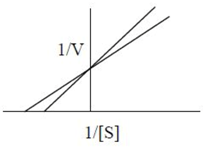
(B) 
(C) 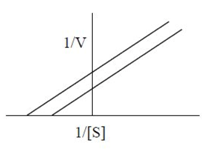
(D) 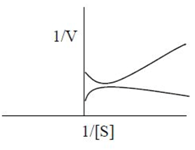
Ans: (A)
34. Cardiotonic steroids have ability to strengthen heart muscle contraction due to the fact that these steroids
(A) inhibit K+-dependent dephosphorylation of Na+-K+ ATPase
(B) activate Na+-K+ ATPase
(C) increase uptake of Na+ by activation of Na+-Ca2+ exchanger
(D) increase uptake of Ca2+ by activation of Na+-Ca2+ exchanger
Ans: (A)
35. A newly isolated circular plasmid gave two bands of 3.2 and 3 kb on digestion with EcoRI and two bands of 5.0 kb and 1.2 kb on digestion with BamHI. Double digestion with EcoRI and BamHI, yielded four bands of 2.6 kb, 2.4 kb, 0.8 kb and 0.4 kb. Digestion with SalI led to disruption of ampicillin resistance gene cassette. The correct restriction map is
(A) 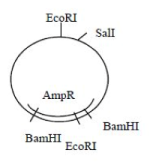
(B) 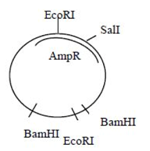
(C) 
(D) 
Ans: (B)
Botany (XL-R)
36. As per the Angiosperm Phylogeny Group (APG II, 2003) classification, which of the following plant families comprises of only single genus with single species?
(A) Lauraceae
(B) Aristolochiaceae
(C) Amborellaceae
(D) Typhaceae
Ans: (C)
37. A cavity, lysigenous in origin and possessing volatile oil is found in the pericarp of one of the following plants. Identify the CORRECT answer.
(A) Litchi
(B) Citrus
(C) Mango
(D) Coconut
Ans: (B)
38. Among the following, which genetic material is naturally inherited through maternal inheritance in higher plants?
(A) Nuclear DNA
(B) Plasmid DNA
(C) Chloroplast DNA
(D) T-DNA
Ans: (C)
39. A typical floral meristem differs from shoot apical meristem on the basis of
(A) Determinate growth
(B) Presence of auxin
(C) Presence of stem cells
(D) Negative geotropism
Ans: (A)
40. Which of the following plant hormones is a carotenoid-cleavage product?
(A) Phytosulfokine
(B) Brassinosteroid
(C) Methyl jasmonate
(D) Strigolactone
Ans: (D)
41. Two of the vir operons of Ti plasmid in Agrobacterium tumefaciens are constitutively expressed. Identify the CORRECT pair.
(A) virA and virG
(B) virF and virH
(C) virC and virD
(D) virB and virE
Ans: (A)
42. Which of the following fungi is an example of obligate biotrophic plant pathogen?
(A) Alternaria brassicicola
(B) Botrytis cinerea
(C) Puccinia triticina
(D) Sclerotinia sclerotiorum
Ans: (C)
43. The phenomenon where an organism lives at the expense of another organism by harming it but not killing, is called
(A) Commensalism
(B) Predation
(C) Symbiosis
(D) Parasitism
Ans: (D)
44. Which of the following is TRUE for K-strategist species?
(A) Produce relatively large number of offspring
(B) Population often grow exponentially
(C) Provide relatively little or no parental care to offspring
(D) Occur in stable and predictable habitats
Ans: (D)
45. Identify the INCORRECT statement with relation to plant secondary metabolites.
(A) Atropine is a member of indole alkaloids
(B) Limonene is a cyclic terpene found in citrus plants
(C) Green tea is rich in polyphenols
(D) Cyanidin contributes to the red colour in rose petals
Ans: (A)
46. Choose the CORRECT set of matches between group I and group II in relation to nitrogen fixation and assimilation
Group I Group II
(P) Nitrobacter 1. NO3− → NO2−
(Q) Nitrite reductase 2. N2 → 2NH3
(R) Nitrogenase 3. NO2− → NH4+
(S) Nitrate reductase 4. NO2− → NO3−
(A) P-4, Q-3, R-2, S-1
(B) P-4, Q-3, R-1, S-2
(C) P-1, Q-2, R-4, S-3
(D) P-3, Q-4, R-2, S-1
Ans: (A)
47. Two plant cells M and N are lying side by side making direct contact. “M” has osmotic potential (Ψs) of -10 bar and pressure potential (Ψp) of 4 bar. On the other hand, “N” has osmotic potential (Ψs) of -12 bar and pressure potential (Ψp) of 5 bar.
Based on these data, what would be the direction of movement of water between M and N?
(A) M to N
(B) N to M
(C) There will be no movement
(D) In both directions
Ans: (A)
48. Two independent non-segregating recessive mutants (m1 and m2) display similar defects in petal formation. When they were crossed with each other (m1 x m2), all the F1 plants developed normal petals. In view of this observation, which of the following conclusions is CORRECT?
(A) Mutations in both m1 and m2 are in the same gene
(B) Mutations in both m1 and m2 are in two separate genes
(C) Inheritance is non-Mendelian
(D) None of the above
Ans: (B)
49. In a hypothetical trihybrid cross of three loci (viz. A, B, C), all were inherited in a complete dominant manner over their recessive alleles a, b, c, respectively. When a test cross between F1 and parent ‘aabbcc’ was performed, following genotypes of eight phenotypically distinct classes were observed with respective numbers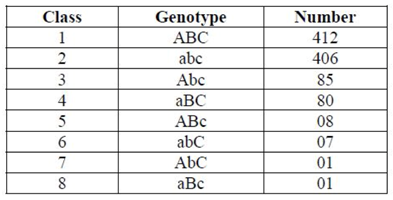
The genetic distance (up to one decimal) between A and C loci will be _____cM.
Ans: (18.3 to 18.5)
50. In a typical sexually reproducing angiospermic plant, if an endosperm cell contains 4.8 × 108 nucleotide pairs of DNA, then microsporocyte of this plants will have ________× 108 nucleotide pairs of DNA.
Ans: (3.2)
51. Identify the CORRECT matching between group I and group II in relation to ecology
Group I
(P) The physical environment of an organism
(Q) The totality of the needs of a population for survival and its resource utilization
(R) The position of a species in a food chain
(S) Basic functional unit comprising living community and its physical environment
Group II
1. Trophic level
2. Habitat
3. Ecosystem
4. Niche
5. Ecological pyramid
(A) P-2, Q-5, R-4, S-1
(B) P-2, Q-4, R-1, S-3
(C) P-5, Q-2, R-3, S-1
(D) P-1, Q-3, R-4, S-2
Ans: (B)
52. Choose the CORRECT set of matches between group I and group II in relation to plant genetic transformation methods.
Group I Group II
(P) Helium 1. Agrobacterium tumefaciens
(Q) Acetosyringone 2. Microinjection
(R) Polyethylene glycol 3. Particle bombardment
(S) Agarose embedding 4. Protoplast
(A) P-4, Q-3, R-2, S-1
(B) P-2, Q-1, R-4, S-3
(C) P-3, Q-4, R-1, S-2
(D) P-3, Q-1, R-4, S-2
Ans: (D)
53. Match the pathogen, disease caused and the affected plant in the CORRECT combination.
| Pathogen | Disease | Plant |
| (P) Blumeria graminis | i. Blast disease | 1. Groundnut |
| (Q) Magnaparthe grisea | ii. Powdery mildew | 2. Apple |
| (R) Venturia inaequalis | iii. Tikka disease | 3. Barley |
| (S) Cercospora personata | iv. Scab disease | 4. Rice |
(A) P-i-1, Q-ii-2, R-iii-3, S-iv-4
(B) P-i-2, Q-ii-1, R-iii-4, S-iv-3
(C) P-ii-3, Q-i-4, R-iv-2, S-iii-1
(D) P-ii-3, Q-i-4, R-iii-2, S-iv-1
Ans: (C)
54. Choose the plant part, its use and the source species in CORRECT combination.
| Plant Part | Use | Species |
| P. Bark | i. Insecticide | 1. Crocus sativus |
| Q. Leaf | ii. Food colorant | 2. Papaver somniferum |
| R. Capsule | iii. Flavoring agent | 3. Azadirachta indica |
| S. Stigma | iv. Analgesic | 4. Cinnamomum zeylanicum |
(A) P-i-1, Q-ii-2, R-iii-3, S-iv-4
(B) P-iii-4, Q-ii-1, R-iv-2, S-i-3
(C) P-ii-1, Q-i-3, R-iv-2, S-iii-4
(D) P-iii-4, Q-i-3, R-iv-2, S-ii-1
Ans: (D)
55. Which two of the following reactions are INCORRECT in relation to C2 oxidative photosynthetic carbon cycle in land plants?
P. 2(Ribulose-1, 5-biphosphate) + 2(CO2) → 2(phosphoglycolate) + 2(3-phosphoglycerate) + 4H+
Q. Serine + α-ketoglutarate → hydroxypyruvate + glutamine
R. 2(Phosphoglycolate) + 2(H2O) → 2(glycolate) + 2Pi
S. Hydroxypyruvate + NADH + H+ → glycerate + NAD+
(A) P and Q
(B) Q and R
(C) R and S
(D) S and P
Ans: (A)
Microbiology (XL-S)
56. Which one of the following is the end product of dissimilatory sulfate reduction by sulfate reducing bacteria?
(A) Hydrogen sulfide
(B) Sulfur dioxide
(C) Sulfur
(D) Thiosulfate
Ans: (A)
57. Which one of the following is the terminal electron acceptor in the given metabolic reaction catalyzed by methanogens?
4H2 + CO2 → CH4 + 2H2O
(A) H2
(B) CO2
(C) CH4
(D) H2O
Ans: (A)
58. Microbes that have their optimal growth rate near 15℃ but can still grow at 0℃ to 20℃ are known as
(A) mesophiles
(B) psychrotrophs
(C) psychrotolerant
(D) psychrophiles
Ans: (D)
59. Which one of the following is NOT a contribution by Robert Koch?
(A) Identification of causative agent of anthrax.
(B) Discovery of causative agent of tuberculosis.
(C) Discovery of causative agent of leprosy.
(D) Identification of causative agent of cholera.
Ans: (C)
60. Unicellular eukaryotic organisms belong to which one of the following kingdoms of classification?
(A) Monera
(B) Plantae
(C) Protista
(D) Animalia
Ans: (C)
61. Which one of the following is a contagious disease?
(A) Chickenpox
(B) Tetanus
(C) Malaria
(D) Filariasis
Ans: (A)
62. The inner mitochondrial membrane comprises of a series of folds known as
(A) cristae
(B) thylakoids
(C) cisterns
(D) cilia
Ans: (A)
63. Which one of the following antibiotics is NOT produced by Streptomyces?
(A) Amphotericin B
(B) Neomycin
(C) Vancomycin
(D) Gentamicin
Ans: (D)
64. Which one of the following statements is TRUE about MacConkey (MAC) agar medium?
(A) MAC agar medium is a selective and differential medium for Gram-positive bacteria.
(B) MAC agar medium is a selective and differential medium for Gram-negative bacteria.
(C) MAC agar medium is an enriched medium for Gram-positive bacteria.
(D) MAC agar medium is a synthetic medium for Gram-positive and Gram-negative bacteria.
Ans: (B)
65. As an antiseptic, alcohol is effective against
(A) bacteria and non-enveloped viruses
(B) bacterial endospores and fungi
(C) bacteria and fungi
(D) fungi and non-enveloped viruses
Ans: (C)
66. An antigen X was injected into a rabbit for the first time at time P. Then the rabbit was given a booster dose of X at time Q. Which one of the following figures accurately depicts the adaptive immune response by the rabbit against X?

(A) i
(B) ii
(C) iii
(D) iv
Ans: (A)
67. A bactericidal agent X is added after 3 hours of growth of a bacterial culture. Following the addition of X, the bacterial growth was measured using the standard plate count method till 24 hours. Which one of the following figures is the most accurate representation of the action of X?
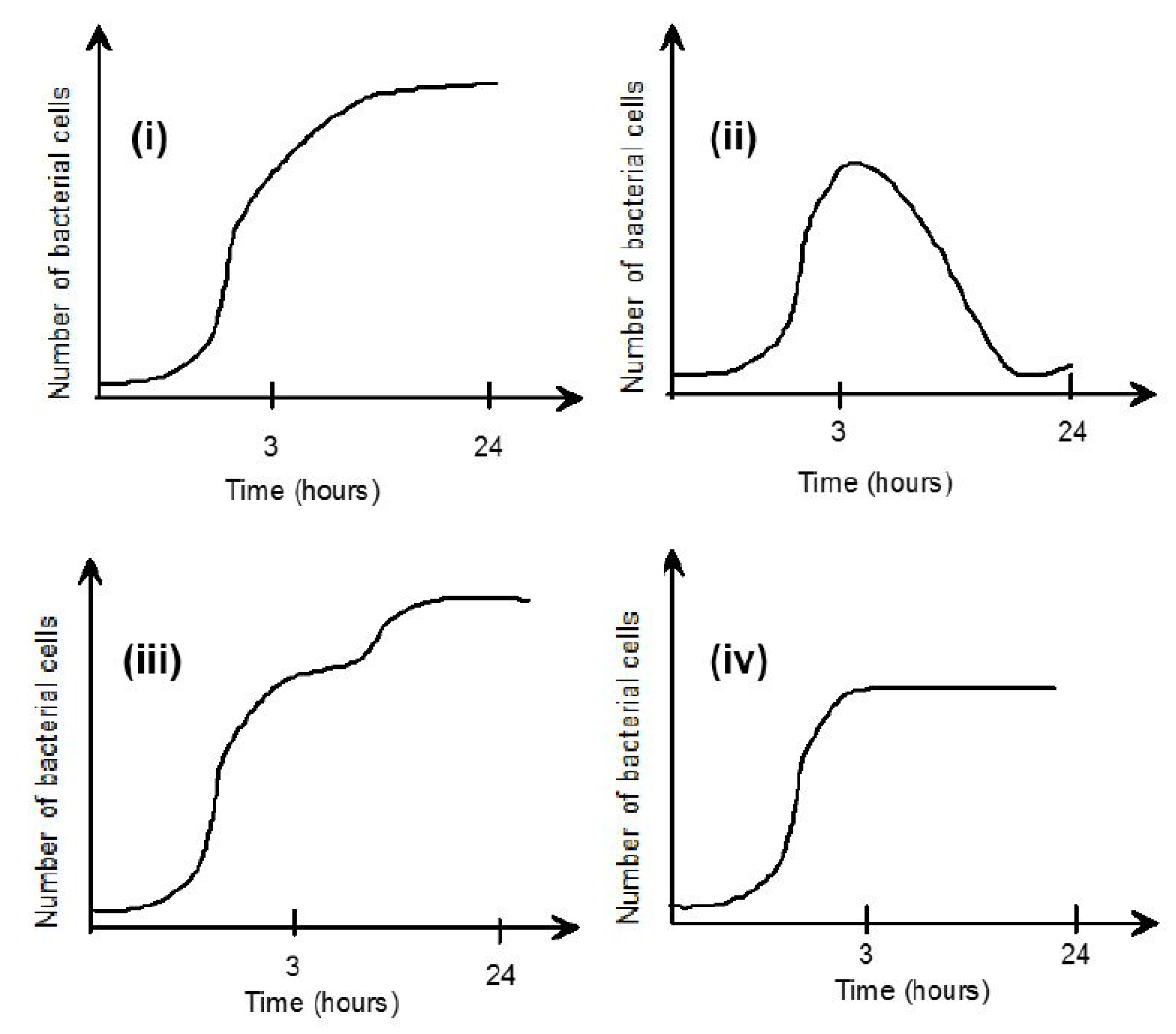
(A) i
(B) ii
(C) iii
(D) iv
Ans: (B)
68. Match the diseases given in Group I with their causative agents from Group II.
Group I Group II
(P) Plague (I) Coxiella burnetii
(Q) Rabies (II) Plasmodium spp.
(R) Q fever (III) Yersinia pestis
(S) Malaria (IV) Lyssavirus
(A) P-III, Q-IV, R-I, S-II
(B) P-III, Q-I, R-II, S-IV
(C) P-IV, Q-III, R-I, S-II
(D) P-III, Q-I, R-IV, S-II
Ans: (A)
69. Match the enzymes given in Group I with the events from Group II.
Group I
(P) UvrABC endonulcease
(Q) Reverse transcriptase
(R) AP endonuclease
(S) ATP sulfurylase
Group II
(I) Retrovirus replication
(II) Base excision repair
(III) Nucleotide excision repair
(IV) Pyrosequencing
(A) P-II, Q-I, R-IV, S-III
(B) P-III, Q-I, R-II, S-IV
(C) P-IV, Q-III, R-I, S-II
(D) P-II, Q-I, R-III, S-IV
Ans: (B)
70. Match the terms given in Group I with the descriptions from Group II.
Group I
(P) Photoautotrophs
(Q)Chemoautotrophs
(R) Photoheterotrophs
(S) Chemoheterotrophs
Group II
(I) Use inorganic chemical reactions for energy production
(II) Use organic compounds for energy production
(III) Use sunlight as energy source and carbon dioxide as carbon source
(IV) Use sunlight as energy source and organic compounds as carbon source
(A) P-II, Q-I, R-IV, S-III
(B) P-III, Q-I, R-IV, S-II
(C) P-IV, Q-III, R-I, S-II
(D) P-II, Q-IV, R-III, S-I
Ans: (B)
71. One-ml sample of a bacterial culture was serially diluted to 105 times, and 46 colonies were obtained after plating this diluted sample on an agar medium. The number of cells present per ml in the undiluted original sample were_______
Ans: (4550000 to 4650000)
72. The transformation efficiency of competent cells prepared in a laboratory is 104 CFU/μg of plasmid DNA. If 0.01 μg of this plasmid is used to transform these competent cells, the number of transformed bacteria in CFU after plating will be ________
Ans: (99 to 101)
73. Assume that the average DNA content of a single microbial cell is 4 femtogram. A soil sample analyzed for its microbial community DNA is found to contain 0.32μg DNA per gram of the soil. The number of microbial cells per milligram of the soil are _______
Ans: (78000 to 82000)
74. Assume that a bacterial culture has mean generation time of 2 hours. If the number of bacteria present after 24 hours of culture are 4.1 × 107, the initial number of bacteria present were ________
Ans: (78000 to 82000)
75. The minimal inhibitory concentration (MIC) of an antibiotic X against Clostribdium tetani, Staphylococcus , Shigella sp., and Streptococcus sp. is 25, 15, 2 and 1 μg/ml, respectively. Assuming that the bioavailable concentration of X in an animal model is 20 μg/ml, which one of these bacteria may develop resistance against X in the animal model?
(A) Clostridium tetani
(B) Staphylococcus sp.
(C) Shigella sp.
(D) Streptococcus sp.
Ans: (A)
Zoology (XL-T)
76. The characteristic feature of deuterostomes is depicted by
(A) coelom formed by the hollowing out of a previously solid cord of mesodermal cells
(B) spiral and determinate cleavage
(C) formation of mouth from blastopore
(D) formation of anus from blastopore
Ans: (D)
77. One of the most remarkable features of evolution is the formation of amnion and allantoin. This appeared for the “first time” in evolutionary time scale in
(A) reptiles
(B) birds
(C) fishes
(D) humans
Ans: (A)
78. A woman with blood group A gave birth to a baby with blood group AB. The blood group of the father would be
(A) only AB
(B) only B
(C) either AB or B
(D) blood group O
Ans: (C)
79. The enzyme amylase can break alpha glycosidic linkages between glucose monomers. Hence amylase can digest which one of the following carbohydrates?
(A) Cellulose
(B) Starch
(C) Chitin
(D) Xylans
Ans: (B)
80. The metabolic pathway which is common to both fermentation and cellular respiration is
(A) the TCA cycle
(B) the electron transport chain
(C) glycolysis
(D) synthesis of acetyl CoA from pyruvate
Ans: (C)
81. A female “Spotted sand piper” courts males repeatedly. This behavior can be explained by the term
(A) polyandry
(B) polygyny
(C) monogamy
(D) sexual cannibalism
Ans: (A)
82. Malaria is caused by Plasmodium species, which is a parasite having a complex life cycle. The fusion between male and female gametocytes of Plasmodium happens inside
(A) human liver
(B) human RBCs
(C) mosquito midgut
(D) mosquito salivary glands
Ans: (C)
83. Aromatase inhibitors are often prescribed for post-menopausal women to treat estrogen receptor positive breast cancer patients, because these class of drugs
(A) reduce prostaglandin biosynthesis
(B) reduce the level of estradiol biosynthesis
(C) inhibit conversion of testosterone to dihydrotestosterone
(D) are non-toxic in post-menopausal women
Ans: (B)
84. The covalent modification performed by kinases which regulate proteins in signaling pathways is
(A) glycosylation
(B) methylation
(C) ubiquitination
(D) phosphorylation
Ans: (D)
85. Which one of the following statements is NOT correct?
(A) During metaphase, the 2 copies of chromosomal DNA are held together at the centromere
(B) The short arm of chromosomes is referred to as p and the long arm is referred to as q
(C) The terminal structures at the end of the chromatids are referred to as telomeres.
(D) The terms heterochromatin and euchromatin refer to the active and repressed regions of the chromosome respectively.
Ans: (D)
86. A particular species is found to have 2n = 16 chromosomes. The n umber of linkage groups in this species will be ______
Ans: (8.0 to 8.0)
87. In the Meselson and Stahl experiment. coli was grown in a medium containing 15NH4Cl. After 24 hours. E. coli were transferred to medium containing 14NH4Cl. After the fourth generation in medium containing 14NH4Cl, the ratio between hybrids (15N/14N) and light (14/14N)labeled DNA will be 1 : n, where the value of n is ______
Ans: (7.0 to 7.0)
88. The population data present in an island is as follows
Genotype Number
AA 300
Aa 500
aa 200
Total 1000
The allele frequency of A(upto two decimals) will be ______
Ans: (0.55 to 0.55)
89. A cell in G1 phase has 16 chromosomes. The total number of chromatids that would be found per cell during Metaphase II of meiosis are _____
Ans: (16 to 16)
90. Upon activation of phospholipase C by ligand binding to G-protein coupled receptor, the Ca+2 concentration in cytosol will
(A) decrease due to blockage of InsP3 gated channel on endoplasmic reticulum
(B) decrease due to blockage of InsP3 gated channel on plasma membrane
(C) increase due to efflux of Ca+2 from InsP3 gated channel on mitochondria
(D) increase due to efflux of Ca+2 from InsP3 gated channel on endoplasmic reticulum as well as influx of Ca+2 from InsP3 gated channel on plasma membrane
Ans: (D)
91. Match the following molecules in Group I with their function in Group II
Group I Group II
P. Transferrin (i) Uptake of glucose
Q. Insulin (ii) Binds iron
R. α-macroglobulin (iii) Substratum for cell attachment
S. Fibronectin (iv) Proteinase inhibitor
(v) Binds to oxygen in RBC
(A) P-ii; Q-i; R-iv; S-iii
(B) P-ii; Q-i; R-v; S-iii
(C) P-ii; Q-i; R-iv; S-ii
(D) P-i; Q-iii; R-ii; S-iv
Ans: (A)
92. If a heavy chain of an antibody molecule weighs 65,000 Daltons (Da) and a light chain weighs 25,000 Da, the approximate calculated weight of an IgM antibody in Da will be
(A) 90,000
(B) 180,000
(C) 360,000
(D) 900,000
Ans: (D)
93. MATCH the signaling pathways in Group I with their functions in Group II, during the process of development
Group I
P. Hedgehog signaling
Q. Hox proteins
R. Wnt signaling
S. Notch signaling
Group II
(i) Involved in signaling at 4-cell embryo stage in C. elegans through glp 1 expression
(ii) Involves frizzled receptor on target cell membrane and establish polarity in insects
(iii) Plays critical role in facial morphogenesis in vertebrates and its mutation causes cyclopia
(iv) Required for T-bx transcription factor expression for vertebrate limb development
(A) P-iii; Q-ii; R-iv; S-i
(B) P-iii; Q-iv; R-ii; S-i
(C) P-iv; Q-iii; R-ii; S-i
(D) P-iii; Q-iv; R-i; S-ii
Ans: (B)
94. In a population which is Hardy-Weinberg equilibrium the frequency of the recessive genotype of a certain trait is 0.09. The percentage of individuals with heterozygous genotype is ______%
Ans: (42.0 to 42.0)
95. An enzyme preparation has activity of 2 Units per 20 μl, and protein concentration 0.4 mg/ml. The specific activity (Units/mg) of this enzyme will be_____
Ans: (250 to 250)
Food Technology (XL-U)
96. Indicate the correct group that contains a monosaccharide, a disaccharide and a trisaccharide.
(A) Glucose, sucrose, mannose
(B) Ribose, lactose, raffinose
(C) Mannose, maltose, lactose
(D) Raffinose, stachyose, glucose
Ans: (B)
97. In which of the following products, ‘must’ is used as the substrate for fermentation?
(A) Beer
(B) Wine
(C) Idli
(D) Tempeh
Ans: (B)
98. Identify the foodborne illness which is not caused by bacteria.
(A) Botulism
(B) Listeriosis
(C) Vibriosis
(D) Cysticercosis
Ans: (D)
99. Nutrient composition of wheat flour changes with extent of extraction from whole wheat grain. Which of the following statements is true if the extraction rate increased from 50% to 90%?
(A) Starch increases, protein increases, fat increases, mineral increases
(B) Starch decreases, protein increases, fat increases, mineral increases
(C) Starch decreases, protein decreases, fat increases, mineral decreases
(D) Starch decreases, protein increases, fat decreases, mineral decreases
Ans: (B)
100. You have two samples of milk, one (X) with 3.8% fat and another (Y) with 0.5% fat. In order to produce a milk with 3.5% fat, 100 ml of Y should be mixed with ______ml of X.
Ans: (1000 to 1000)
101. Match the items in column I with the items in column II in relation to food safety and standards.
Column I Column II
P. HACCP 1. International food standards
Q. FSSAI 2. Quality control protocol
R. CIP 3. Food plant sanitation and hygiene protocol
S. CODEX 4. Indian food standards
(A) P-2, Q-4, R-3, S-1
(B) P-4, Q-3, R-2, S-1
(C) P-1, Q-4, R-2, S-3
(D) P-4, Q-2, R-3, S-1
Ans: (A)
102. A 50% sucrose solution at 20℃ is flowing at a rate of 3.5 m3/h through a pipe with an inside diameter of 0.0475 m and length of 12 m. The viscosity and the density of the solution are 15.43 cp and 1232 kg/m3, respectively. The Reynolds number of the flow is ______.
Ans: (2078 to 2086)
103. In a pineapple juice, fibre particles having mean diameter of 160 μm and density of 1075 kg/m3 are settling by gravity. If the density and viscosity of the juice are 1015 kg/m3 and 0.98 cp, respectively, terminal velocity of the fibre particles is _____mm/s.
Ans: (0.80 to 0.90)
104. Power consumption in liquid mixing is proportional to ______.
(A) Powder number × liquid density × (rotational speed)3 ×(impeller diameter)5
(B) Powder number × liquid density × (rotational speed)2 × (impeller diameter)3
(C) Liquid density × viscosity of the liquid × (rotational speed)2 × (impeller diameter)3
(D) Acceleration due to gravity × liquid density × (rotational speed)3 × (impeller diameter)5
Ans: (A)
105. A dye-reduction test for estimation of viable microorganisms, the most commonly used dyes are methylene blue, triphenyltetrazolium-chloride and _________
(A) Malachite green
(B) Amaranth
(C) Tartrazine
(D) Resazurin
Ans: (D)
106. Match the following items of group I with the items of group II in relatin to the quality of fat.
Group I
P. Saponification number
Q. Iodine number
R. Reichert Meissl number
S. Acetyl value
Group II
1. Unsaturation of fatty acid
2. Volatile water soluble fatty acid
3. Hydroxy fatty acid
4. Molecular weight of fatty acid
(A) P-1, Q-2, R-3, S-1
(B) P-1, Q-3, R-4, S-2
(C) P-4, Q-1, R-2, S-3
(D) P-2, Q-1, R-3, S-4
Ans: (C)
107. Match the following metabolic product (Column I) that indicates the quality of food (Column II)
Column I Column II
P. Ethanol 1. Canned vegetable
Q. Lactic acid 2. Fish
R. Trimehylamine 3. Butter
S. Volatile fatty acid 4. Apple juice
(A) P-3, Q-2, R-4, S-1
(B) P-4, Q-1, R-2, S-3
(C) P-4, Q-3, R-2, S-1
(D) P-3, Q-4, R-2, S-1
Ans: (B)
108. Correlate the vitamins in column I with their role in promoting reaction/process in column II.
Column I Column II
P. Riboflavin 1. Visual cycle
Q. Vitamin D 2. Acyl group transfer
R. Pantothenic acid 3. Regulation of Ca2+ metabolism
S. Vitamin A 4. Oxidation-reduction reaction
(A) P-1, Q-2, R-4, S-3
(B) P-2, Q-1, R-3, S-4
(C) P-3, Q-4, R-1, S-2
(D) P-4, Q-3, R-2, S-1
Ans: (D)
109. A pure strain with generation time of 60 min is used in a fermentation process. Following inoculation (0 h), the stain takes 2 h for adaptation, 10 h to achieve maximum growth and 12 h to arrive at the point where the death rate is higher than the growth rate. If the inoculation load is 100 cells, the total populatin at the end of 10 h will be ______.
Ans: (25550 to 25650)
110. Refer to the shear stress – shear rate plot shown in the figure below. Match the lines (Column I) with appropriate rheological behavior (Column II)
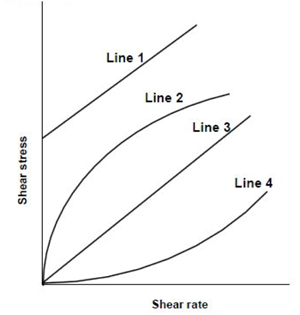
Column I Column II
P. Line 1 1. Dilatant
Q. Line 2 2. Newtonian
R. Line 3 3. Pseudoplastic
S. Line 4 4. Bingham plastic
(A) P-2, Q-3, R-4, S-1
(B) P-1, Q-3, R-4, S-2
(C) P-2, Q-4, R-3, S-1
(D) P-4, Q-3, R-2, S-1
Ans: (D)
111. Water flowing at a rate of 1 kg/mi is heated from 12 to 80℃ with flue gas supplied at a rate of 3 kg/min. The temperature and specific heat of the flue gas are 180℃ and 1.05 kJ/kg.K, respectively. If specific heat of water is 4.2 kJ/kg.K and the flow is parallel, then the logarithmic mean temperature difference will be _______℃.
Ans: (53.30 to 55.25)
112. The Lineweaver-Burk plot of an enzymatic reaction shows Vmax of 160 μmol/l.min and km of 60 μmol/l. For a substrate concentration of 40 μmol/l the velocity of the reaction is estimated to be ______μmol/l.min.
Ans: (64.0 to 64.0)
113. A suspension containing 2 × 104 spores of organism A having a D1℃ value of 1.5 min and 8 × 105 spores of organism B having a D121.1℃ value of 0.8 min is heated at a constant temperature of 121.1℃. The heating time needed to obtain a probability of spoilage ‘1 in 1000’ is _____min.
Ans: (10.80 to 11.20)
114. In a evaporation process, a compressor picks up 0.05 m3 air in each revolution and compresses 500 kg of air per minute. If the specific volume of air is 0.9 m3/kg, then the compressor speed is _____rpm.
Ans: (9000 to 9000)
115. For a soybean oil extraction system, solvent: soy ratio is maintained at 0.5:1 (w/w). Original seed contains 18% oil (w/w). If the meal (soy solid) after final desolventization has 0.01 kg oil per kg oil free meal, then the effectiveness of the solvent (kg oil/kg solvent) in the extraction process is ______
Ans: (0.30 to 0.40)
General Aptitude
116. The event would have been successful if you ______ able to come.
(A) are
(B) had been
(C) have been
(D) would have been
Ans: (B)
117. There was no doubt that their work was thorough.
Which of the words below is closest in meaning to the underlined word above?
(A) Pretty
(B) Complete
(C) Sloppy
(D) Haphazard
Ans: (B)
118. Four cards lie on a table. Each card has a number printed on one side and a colour on the other. The faces visible on the cards are 2, 3, red, and blue.
Proposition: If a card has an even value on one side, then its opposite face is red.
The cards which MUST be turned over to verify the above proposition are
(A) 2, Red
(B) 2, 3, Red
(C) 2, blue
(D) 2, red, blue
Ans: (C)
119. What is the value of x when 
(A) 1
(B) −1
(C) −2
(D) Cannot be determined
Ans: (B)
120. Two dice are thrown simultaneously. The probability that the product of the numbers appearing on the top faces of the dice is a perfect square is
(A) 1/9
(B) 2/9
(C) 1/3
(D) 4/9
Ans: (B)
121. Bhaichung was observing the pattern of people entering and leaving a car service centre. There was a single window where customers were being served. He saw that people inevitably came out of the centre in the order that they went in. However, the time they spent inside seemed to vary a lot: some people came out in a matter of minutes while for others it took much longer.
From this, what can one conclude?
(A) The centre operates on a first-come-first-served basis but with variable service times, depending on specific customer needs.
(B) Customers were served in an arbitrary order since they took varying amounts of time for service completion in the centre.
(C) Since some people came out within a few minutes of entering the centre. The system is likely to operate on a last-come-first-served basis.
(D) Entering the centre early ensured that one would have shorter service times and most people attempted to do this.
Ans: (A)
122. A map shows the elevations of Darjeeling, Gangtok, Kalimpong, pelling, and Siliguri, Kalimpong is at a lower elevation than Gangtok. Pelling is at a lower elevation than Gangtok. Pelling is at a higher elevation that siliguri. Darjeeling is at a higher elevation than Gangtok.
Which of the following statements can be inferred from the paragraph above?
i. Pelling is at a higher elevation than Kalimpong
ii. Kalimpong is at a lower elevation than Darjeeling
iii. Kalimpong is at a higher elevation than siliguri
iv. Siliguri is at a lower elevation than Gangtok
(A) Only ii
(B) Only ii and iii
(C) Only ii and iv
(D) Only iii and iv
Ans: (C)
123. P,Q,R,S,T and U are seated around a circular table. R is seated two places to the right of Q.P is seated three places to the left of R. S is seated opposite U. If P and U now switch seats.
Which of the following must necessarily be true?
(A) P is immediately to the right of R
(B) T is immediately to the left of P
(C) T is immediately to the left of P or P is immediately to the right of Q
(D) U is immediately to the right of R or P is immediately to the left of T
Ans: (C)
124. Budhan covers a distance of f19 km in 2 hours by cycling one fourth of the time and walking the rest. The next day he cycles (at the same speed as before) for half the time and walks the rest (at the same speed as before) and covers 26 km in 2 hours. The speed in km/h at which Budhan walks is
(A) 1
(B) 4
(C) 5
(D) 6
Ans: (D)
125. The points in the graph below represent the halts of a lift for duration of 1 minute, over a period of 1 hour.
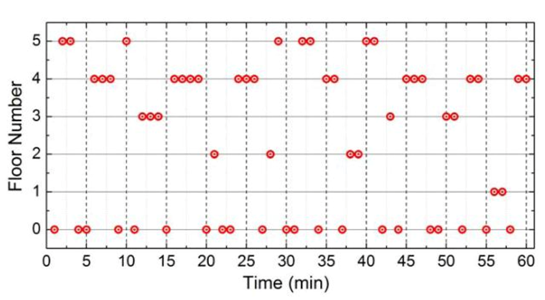
Which of the following statements are correct?
i. The elevator never moves directly from any non-ground floor to another non-ground floor over the one hour period
ii. The elevator stays on the fourth floor for the longest duration over the one hour period
(A) Only i
(B) Only ii
(C) Both i and ii
(D) Neither i nor ii
Ans: (D)
Latest Govt Job & Exam Updates: